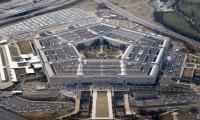As weather forecast for May and June is scary with temperature likely to go up, former prime minister and leader of Pakistan Tehreek-e-Insaf (PTI) Imran Khan has announced plan of bringing two million people to the federal capital in a bid to exert pressure on the establishment to force what he called ‘imported government’ to announce fresh general elections in 90 days.
The coalition government of nearly 12 parties seems determined that elections will be held as per schedule in mid-2023. This surely will be Imran Khan’s ‘do or die’ march, or one can say ‘make or break.’
After Eid, we are most likely to see hectic political as well as judicial activity with some high profile cases in the post-April 9 scenario being taken up both in the Supreme Court, Islamabad High Court and in the Lahore High Court. The final outcome of some of these cases could change the political discourse. Imran Khan surely has a complete protest plan and before announcing the final date for what he called ‘Azadai March’ he will be touring Pakistan as part of public mobilisation.
It will also be a test for PTI’s capacity to launch a movement without the support of those who matter in this country. Unlike in the case of 2014 dharna where things were quite managed, this crowd which Imran intends to bring would not be as ‘controlled’ as a few years back. The threatening tone of likes Sheikh Rashid and Fawad Chaudhry hinting towards violence or civil war-like situation is alarming.
Any success in the 63-A could give further boost to the PTI particularly in Punjab. However, there is also confusion within the PTI whether after quitting the National Assembly should they also resign from the provincial assemblies and dissolve its government in KP in a bid to deepen the political crisis in the country.
Imran Khan and PTI apparently looked in isolation as he and his party leadership took a highly critical view of the role of the establishment, judiciary, The Election Commission as well as following the policy of confrontation with all the anti-PTI parties including his former allies. The parties like PPP, PMLN, MQMP, Awami National Party, Balochitan Awami Party, Jamhoori Watan Party and others in the ruling coalition also have their own strong constituencies.
The recent incidents of violence, hooliganism and attacks on each other are likely to increase with the kind of intolerance growing rapidly in our society.
There are cases like President’s reference and Article 63-A in the Supreme Court and foreign funding case in the Election Commission of Pakistan. And in Lahore, the larger bench will hear the case on the ongoing Punjab’s political crisis–the oath-taking of Chief Minister Hamza Shehbaz. Besides, the trial court has also fixed the date for framing charges of corruption against the Prime Minister and has summoned him on the next date of hearing in a few days.
Punjab political crisis has not die down despite Hamza being elected Chief Minister and taking oath as per order of the Lahore High Court. Things also not look good for President Arif Alvi and Governor Punjab Umar Sarfraz Cheema, who till the oath-taking refused to leave the Governor House. Despite resistance from him, the oath-taking did take place at the Governor’s House. Besides, the trial court has also fixed the date for framing charges of alleged corruption against Prime Minister Shehbaz Sharif.
In these political developments, some unusual things have taken place. Some of those political characters, who were normally considered close to ‘power that be,’ are clearly siding with Imran Khan, Sheikh Rashid and Ch Pervaiz Elahi, the two most known voices since the 80s and 90s. The political divide has made the situation far more alarming. Chaudhry’s camp also looks like a ‘divided house’ with Pervaiz Elahi supporting PTI while Shujaat’s son on the government side as a federal minister.
The former prime minister has already built his narrative that he had been ousted through a US-backed conspiracy and is getting popular support. The counter-narrative from the coalition government is still missing. On the contrary, the government, through its agencies like FIA, not only digging out corruption cases against Imran Khan and former ministers and advisers but also considering to register a case under Article 6 against PTI Chairman, President Arif Alvi, former Speaker and Deputy Speaker of National Assembly and Governor Punjab in regard to the happenings since April 9. But, the legal opinion within the government is divided on this very Article whether it could be applied or not as abrogating and subverting the Constitution has altogether a different meaning than the violation of the Constitution.
But, important will be the
counter-narrative of PMLN, PPP and their allies on the much-debated ‘Lettergate.’ Will Prime Minister Shehbaz Sharif constitute a judicial commission headed by a Supreme Court judge or judges or not?
The challenge government is confronting is bad economy and power loadshedding, while the answer to that is major relief to the people. If Shehbaz government succeeds in doing the ‘impossible’ in the present deteriorating economic condition, the coalition partners may be able to ease the political tension. Registration of cases and arrest in genuine or non-genuine cases at this stage would not only be counter-productive but could help Imran Khan.
So, it’s a decisive political battle for both Imran and PTI and the coalition government comprising 12 parties including PMLN and PPP.
The writer is a columnist and analyst for Geo, The News and Jang Twitter:@MazharAbbasGEO







